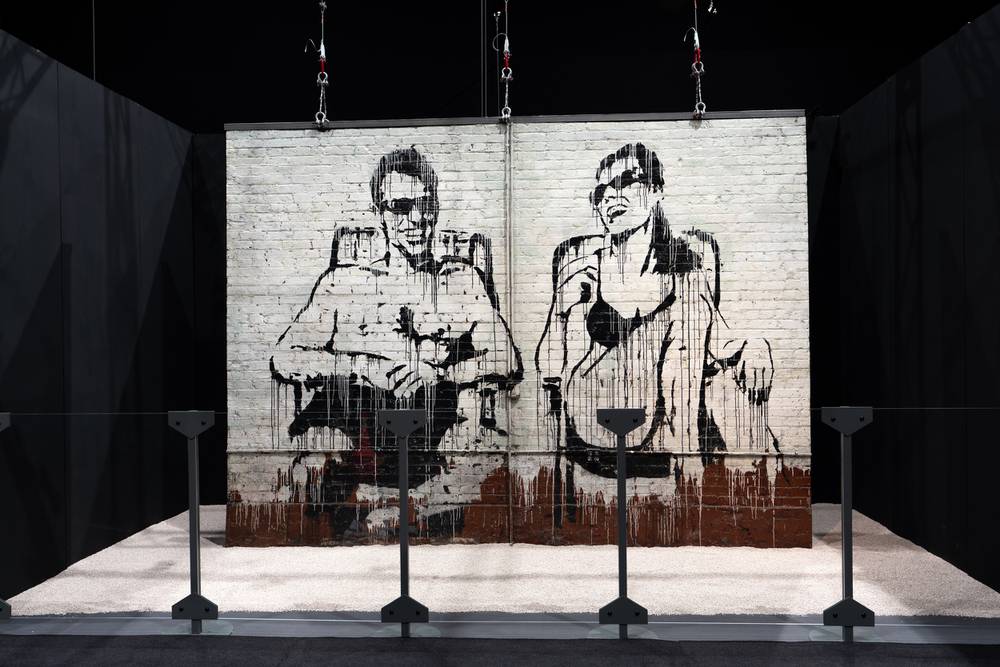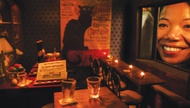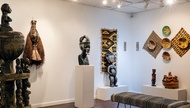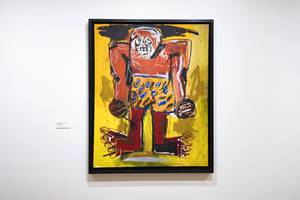
Banksy: Genius or Vandal? Through April 5; Monday-Saturday, 10 a.m.-9 p.m.; Sunday, 11 a.m.-7 p.m.; $29. Immersion Vegas at Fashion Show Mall, 725-600-0081.
Who hasn’t heard of Banksy? From the kiddo tagging England’s alleys in the 1980s to the prankster shredding his own print just after it sold for $1.4 million at Sotheby’s in 2018, Banksy has made an international name for himself. The street artist-turned-celebrity has been praised for elevating stencils to a fine art medium and reviled for selling out his street cred.
Banksy’s artwork is hard to pin down, and not just because he has cloaked his true identity for decades. Since much of Banksy’s art is painted on public walls, it plumb disappears—scraped off, excised and sold, or defaced by taggers annoyed by his success.
Banksy: Genius or Vandal? gives viewers a rare chance to see the artist’s actual prints, paintings and sculptures. The pop-up show inside Fashion Show Mall also documents Banksy’s prolific output through videos, installations, mockumentaries, photographs and ephemera. Produced by IQ Art Management Corporation and curated by Alexander Nachkebiya, the travelling exhibition (previously on view in Moscow, Madrid and Lisbon) presents more than 70 artworks in a theatrical, multimedia “street” setting. While it’s doubtful Banksy would approve of the facile title or predictable presentation—let alone conceive of charging $29 per ticket—the unauthorized Genius or Vandal? show provides satisfying insight into his artistic accomplishment from 1999 to 2018.
Among the hallmarks of Banksy’s style is readily accessible political messaging, a byproduct of street art produced quickly—often illegally—in a public setting aimed at the largest possible general audience. In “Napalm” (2004), a work protesting the war machine, Banksy sandwiches, between Mickey Mouse and Ronald McDonald, the screaming child from an iconic 1972 Vietnam war photo, juxtaposing happy-face capitalism with unconscionable chemical warfare. The monochromatic screen print is arresting as much for its conflicting content as for its compositional movement. The girl’s defeated body droops in excruciating pain, contrasting with Mickey’s and Ronald’s robust, unassailable limbs.
Another Banksy hallmark is wit, as illustrated by “Trolleys,” a 2007 screen print depicting cavemen poised to slay shopping carts lolling on the savannah. Banksy’s precise arrangement of minimal elements on a sparse picture plane—three cavemen, three carts—creates compositional harmony and vigor. A Banksy anti-Capitalism meme, the “trolley” also appears in the show falling with its shopper from a tall building (“Flying Trolley”) and marooned in Monet’s lush floral landscape (“Crude Oils”).
Several Banksy works riffing on established artists (Andy Warhol, Keith Haring) suggest that the artist is self-conscious about his place in history, caught as he is between the social critique of street art and the heady millions of a Sotheby’s gavel. Fortune aside, neither the populism of Banksy’s content nor the sensationalism of his pranks should be allowed to obscure his artistic achievement. Just as the formal elements in Banksy’s work reward close attention, so Genius or Vandal? repays a visit.






